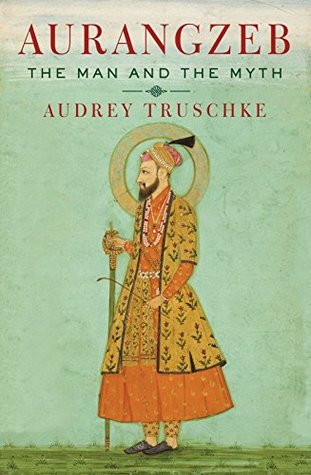More on this book
Community
Kindle Notes & Highlights
But, most of all, he lamented his flaws as a king.
subsuming most of the Indian subcontinent under a single imperial power for the first time in human history.
He made lasting contributions to the interpretation and exercise of legal codes and was renowned—by people of all backgrounds and religious stripes—for his justice.
many Indians today have no doubt that he was a zealous bigot who ruled by the sword and left behind a trail of Hindu tears.
Current popular visions of Aurangzeb are more fiction than reality,
It is not incidental that Aurangzeb is widely believed to have been the most pious of the Mughal kings.
‘Seeds of Partition were sown when Aurangzeb triumphed over [his brother] Dara Shikoh.’
Such ideas filtered to society at large via textbooks and mass media, and several generations have continued to eat up and regurgitate the colonial notion that Aurangzeb was a tyrant driven by religious fanaticism.
For instance, detractors trumpet that Aurangzeb destroyed certain temples without acknowledging that he also issued many orders protecting Hindu temples and granted stipends and land to Brahmins. They denounce that he restricted the celebration of Holi without mentioning that he also clamped down on Muharram and Eid festivities. They omit altogether that Aurangzeb consulted with Hindu ascetics on health matters and employed more Hindus in his administration than any prior Mughal ruler by a substantial margin.
Aurangzeb’s contemporaries included such kings as Charles II of England, Louis XIV of France, and Sultan Suleiman II of the Ottoman Empire. No one asserts that these historical figures were ‘good rulers’ under present-day norms because it makes little sense to assess the past by contemporary criteria.
But we strive to hold back judgement long enough so that the myth of Aurangzeb can fade into the background and allow room for a more nuanced and compelling story to be told.
Aurangzeb cannot be reduced to his faith.
Contrary to popular belief, for instance, Aurangzeb never oversaw a large-scale conversion programme that offered non-Muslims a choice between Islam or the sword. Aurangzeb did not destroy thousands of Hindu temples (a few dozen is a more likely number). He did not perpetrate anything resembling a genocide of Hindus. In fact, Aurangzeb appointed Hindus to top positions in his government. He protected the interests of Hindu religious groups, even ordering fellow Muslims to cease harassing Brahmins. He tried to provide safe roads and basic law and order for all his subjects.
Three aspects of Aurangzeb’s reign help us better grasp his ruling strategies and vision of justice: the imperial bureaucracy, Aurangzeb’s view of himself as a moral leader, and his policies regarding Hindu and Jain temples.
The Mughals inherited a Central Asian custom that all male family members had equal claims to political power.
While it was an accepted Mughal practice for brothers to fight for the throne, overthrowing one’s reigning father was considered abhorrent. The chief qazi (Muslim judge) of the Mughal Empire felt so strongly on the matter that he risked imperial wrath and refused to endorse Aurangzeb’s ascension while Shah Jahan lived. Aurangzeb dismissed him and hired a more pliable man for the job, Abdul Wahhab.
in the 1660s Aurangzeb tried to lure the Maratha leader Shivaji into imperial service in order to neutralize the Maratha threat to the Mughal state. When that effort failed, Aurangzeb turned to violence and fought the Marathas, with limited success, for the rest of his life.
even as they continued to thwart Mughal dominance.
Aurangzeb retorted (quoted on p. 47) that skilled conquerors are not always skilled rulers, whose primary purpose is just governance.
while discarding and modifying others.
Aurangzeb’s physical distance did not prevent him from becoming personally involved with many administrative details in his persistent but elusive pursuit of justice.
Grain prices remained low, and the people benefited from Shaysta Khan’s generosity.
more Marathas (who, by the mid-seventeenth century, had become a formidable constituency) sided with Aurangzeb.
killed several of Shaysta Khan’s wives and his son.
in 1669. The temple had been built during Akbar’s reign by Raja
creep into their chronicles, errors that can be sometimes


